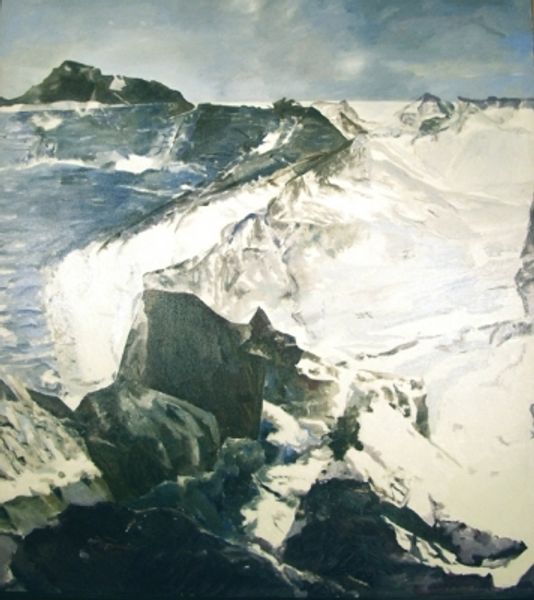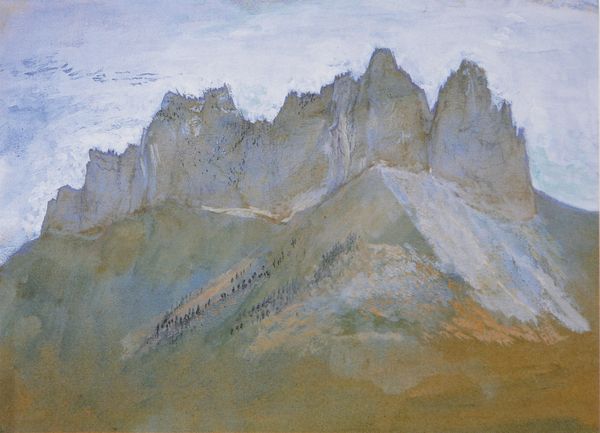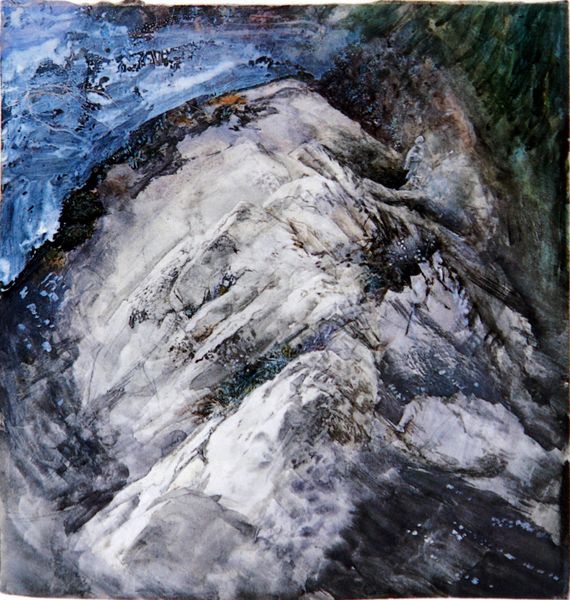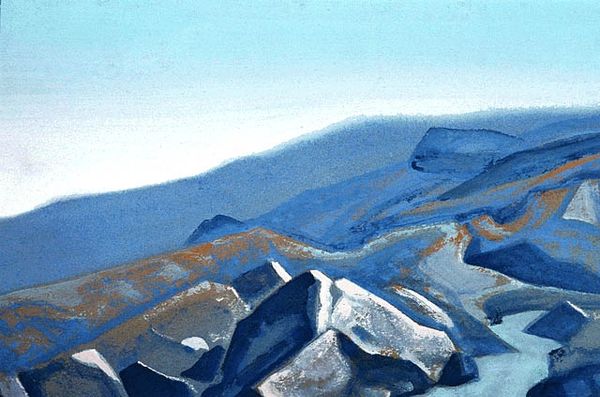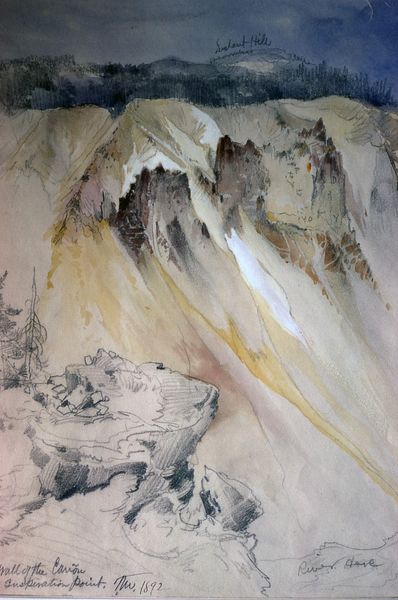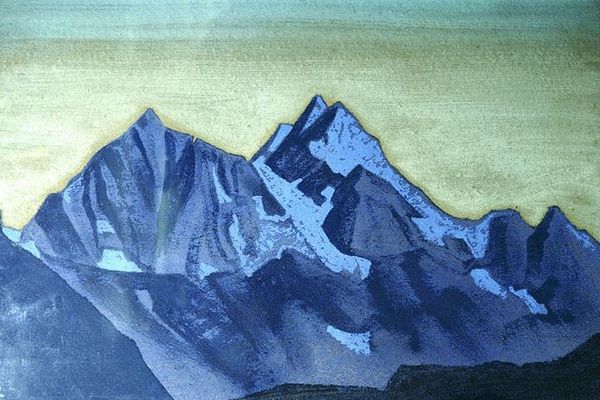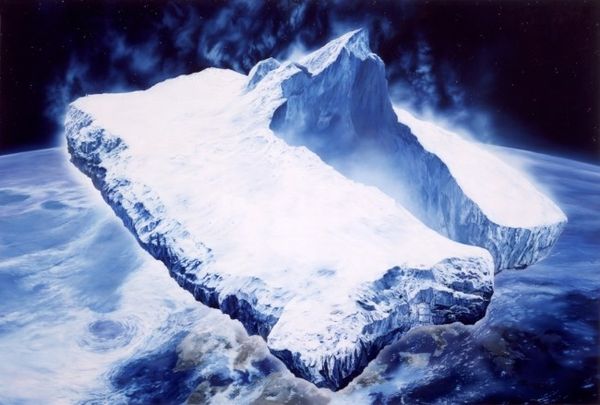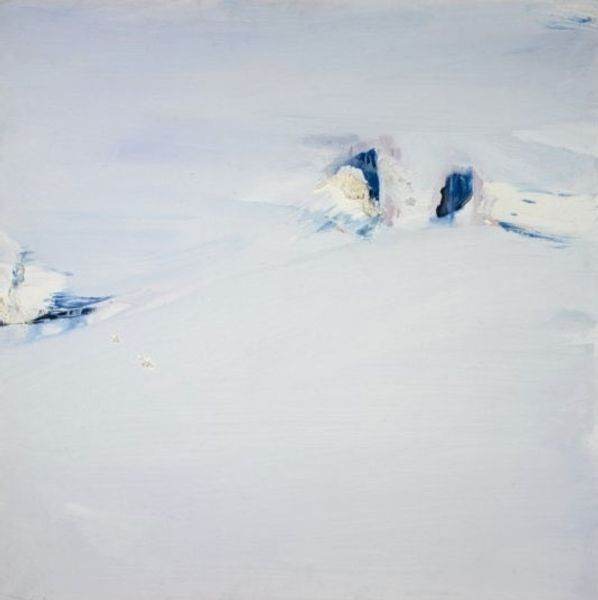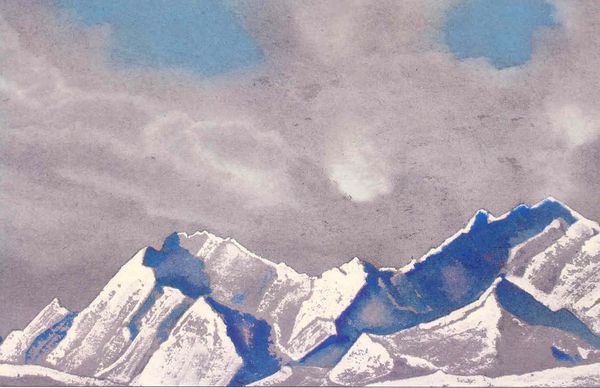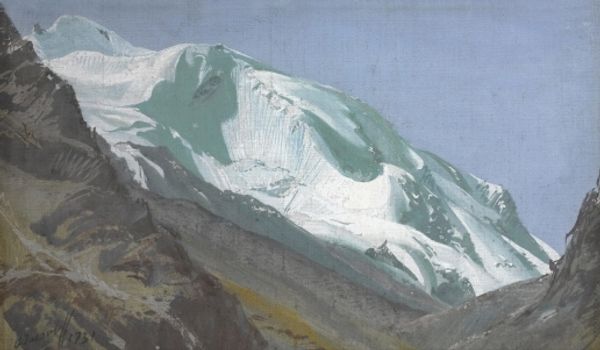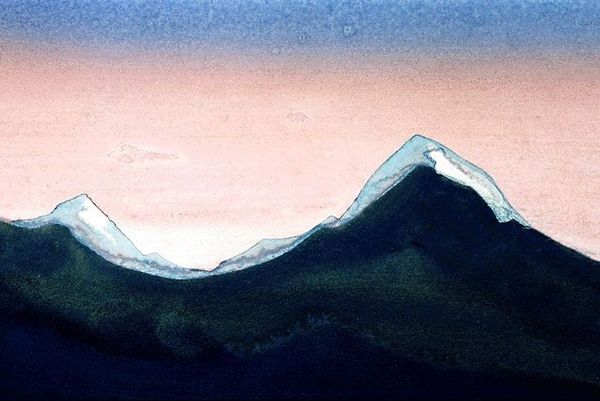
Copyright: Public domain
Editor: This is John Ruskin’s "Bay of Uri, Lake of Lucerne," created in 1858, likely with watercolors and possibly pastel en plein-air. It’s quite somber, almost monochromatic, with these huge rock faces reflected in the water. What strikes you when you look at this piece? Curator: The starkness is definitely compelling. I immediately think about Ruskin's broader social concerns. He was deeply critical of industrialization and its impact on the environment and human spirit. This romantic idealization of nature, even with its somber tone, is inherently a political statement. Do you see a yearning for a pre-industrial world here? Editor: I see what you mean. The scale of the mountains compared to any sign of human life suggests that insignificance, perhaps a longing for simpler times, definitely contrasting with the industrial revolution raging on at the time. The untouched landscape almost seems defiant. How does the medium contribute to this feeling? Curator: Absolutely. Watercolor lends itself to capturing the fleeting atmospheric conditions. But even in its apparent naturalism, we must recognize Ruskin's deliberate act of framing. The "truth to nature" he advocated for was always mediated through his own socio-political lens, a commentary of his reality. Think about the accessibility to nature being drastically different among various classes at this time, how would this artwork communicate to each? Editor: That's a great point, and I'm particularly interested to explore it more from a gendered point of view. Considering the very limited access women had to art education at the time, I think that would reveal something fascinating about Ruskin's intentions with this piece. Curator: Yes, it's crucial to consider who had the power to define and represent "nature" and whose voices were excluded. That opens up fascinating avenues for further inquiry, perhaps relating his aesthetic choices to gendered power dynamics of the time. Editor: I hadn’t considered that this vista might invite critique of social structures beyond industry, so thinking of that intersectionality enriches my experience of the artwork, revealing some very telling details.
Comments
No comments
Be the first to comment and join the conversation on the ultimate creative platform.
